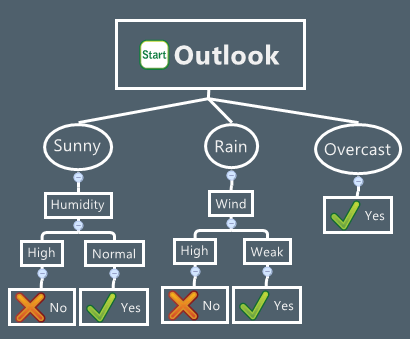There are several major data mining techniques have been developing and using in data mining projects recently includingassociation, classification, clustering, prediction, sequential patternsand decision tree. We will briefly examine those data mining techniques in the following sections.
Association
Association is one of the best-known data mining technique. In association, a pattern is discovered based on a relationship between items in the same transaction. That’s is the reason why association technique is also known as relation technique. The association technique is used in market basket analysis to identify a set of products that customers frequently purchase together.
Retailers are using association technique to research customer’s buying habits. Based on historical sale data, retailers might find out that customers always buy crisps when they buy beers, and, therefore, they can put beers and crisps next to each other to save time for customer and increase sales.
Classification
Classification is a classic data mining technique based on machine learning. Basically, classification is used to classify each item in a set of data into one of a predefined set of classes or groups. Classification method makes use of mathematical techniques such as decision trees, linear programming, neural network and statistics. In classification, we develop the software that can learn how to classify the data items into groups. For example, we can apply classification in the application that “given all records of employees who left the company, predict who will probably leave the company in a future period.” In this case, we divide the records of employees into two groups that named “leave” and “stay”. And then we can ask our data mining software to classify the employees into separate groups.
Clustering
Clustering is a data mining technique that makes a meaningful or useful cluster of objects which have similar characteristics using the automatic technique. The clustering technique defines the classes and puts objects in each class, while in the classification techniques, objects are assigned into predefined classes. To make the concept clearer, we can take book management in the library as an example. In a library, there is a wide range of books on various topics available. The challenge is how to keep those books in a way that readers can take several books on a particular topic without hassle. By using the clustering technique, we can keep books that have some kinds of similarities in one cluster or one shelf and label it with a meaningful name. If readers want to grab books in that topic, they would only have to go to that shelf instead of looking for the entire library.
Prediction
The prediction, as its name implied, is one of a data mining techniques that discovers the relationship between independent variables and relationship between dependent and independent variables. For instance, the prediction analysis technique can be used in the sale to predict profit for the future if we consider the sale is an independent variable, profit could be a dependent variable. Then based on the historical sale and profit data, we can draw a fitted regression curve that is used for profit prediction.
Sequential Patterns
Sequential patterns analysis is one of data mining technique that seeks to discover or identify similar patterns, regular events or trends in transaction data over a business period.
In sales, with historical transaction data, businesses can identify a set of items that customers buy together different times in a year. Then businesses can use this information to recommend customers buy it with better deals based on their purchasing frequency in the past.
Decision trees
The A decision tree is one of the most common used data mining techniques because its model is easy to understand for users. In decision tree technique, the root of the decision tree is a simple question or condition that has multiple answers. Each answer then leads to a set of questions or conditions that help us determine the data so that we can make the final decision based on it. For example, We use the following decision tree to determine whether or not to play tennis:

Starting at the root node, if the outlook is overcast then we should definitely play tennis. If it is rainy, we should only play tennis if the wind is the week. And if it is sunny then we should play tennis in case the humidity is normal.
We often combine two or more of those data mining techniques together to form an appropriate process that meets the business needs.